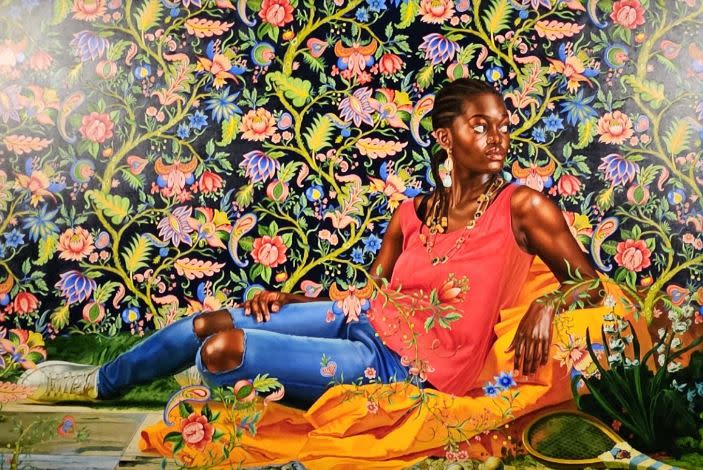Kehinde Wiley: An Archaeology of Silence, Is An Artistic Rallying Cry For The African Diaspora

- Oops!Something went wrong.Please try again later.
Some artists get their flowers after death, but Kehinde Wiley is rightfully getting them in his lifetime.
The best way to experience his talent is to see his work in person. To this end, visit Kehinde Wiley: An Archaeology of Silence at the de Young Museum in San Francisco. It opened in March and runs until mid-October.
Here’s what to know about this powerful art exhibition.
Wiley’s Work Goes Beyond Aesthetics
Some art can be appreciated for its beauty alone. Wiley’s work, however, forces the viewer to confront uncomfortable truths about the Black story.
A glance isn’t enough to absorb the details and symbolism because the paintings are larger than life. They feature young Black people relaxing, sleeping, and in some cases, they’re dead. The colorful, floral backgrounds provide a dream-like contrast that pushes the realistic figures forward.
The statues are equally impressive and one is large enough for its own room. Here, a young Black man is slumped over a horse, and Wiley depicts the anatomy of the rider and the animal with backbreaking effort.
The parallel between Wiley’s work and the old European masters is obvious to most. In the art world, it’s common to see white people as monarchs, martyrs, and mythical creatures. Instead of furthering this tradition, Wiley fills these roles with Black people. It’s a unique and refreshing take.
The Art Was Born During Struggle
During the pandemic, Wiley was in Dakar, Senegal. He created a large body of work there, much of which is displayed at the de Young. Wiley was moved by the killing of George Floyd, and other Black people in recent years but the art isn’t limited to the Black American experience. It’s a rallying cry for the diaspora.
If you need a moment to process what you’ve seen, head to the respite room. Guests are encouraged to reflect and share their thoughts on the message board there.
Thanks to a $1 million dollar grant from Google, the exhibit is free for three more weekends: July 29-30, August 19-20, and September 16-17.

